Sean O’Callaghan of Kerry’s Wild Side gives us the low-down on one of the most testosterone-charged events in the Irish wildlife calendar: the annual red deer rut at Killarney National Park in County Kerry.
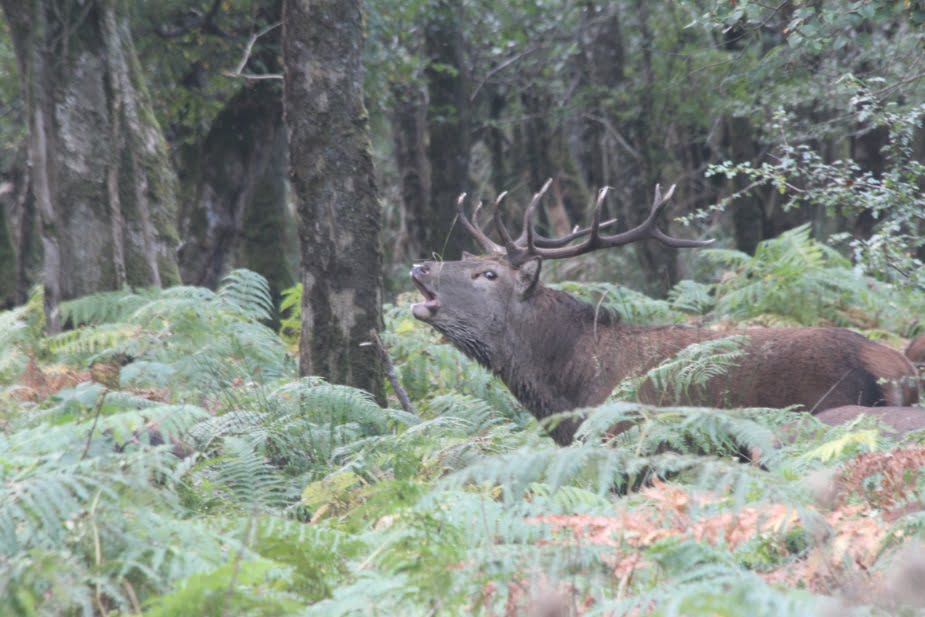
Each autumn as the first of the winter chills set in and the summer’s dying leaves stubbornly depart their branches, the Killarney valley and surrounding mountainsides play host to one of Ireland’s great wildlife spectacles: the red deer rut.
If the conditions are just right, with no wind and a drop in temperature overnight, the valley, which encompasses the famed National Park, can take on a mystic guise. Layered with mist lingering before the sun rises, the early hours of a mid-October morning appear as if the park’s largest lake, Lough Leane, had been left simmering overnight. The wet woodlands and open grasslands of the valley are masked in this low hanging precipitation, concealing the country’s largest land mammal. While you might not be able to see the red stags, you will certainly hear them, bellowing out an extended chest-churning roar. It’s as if Jurassic Park has become a reality.
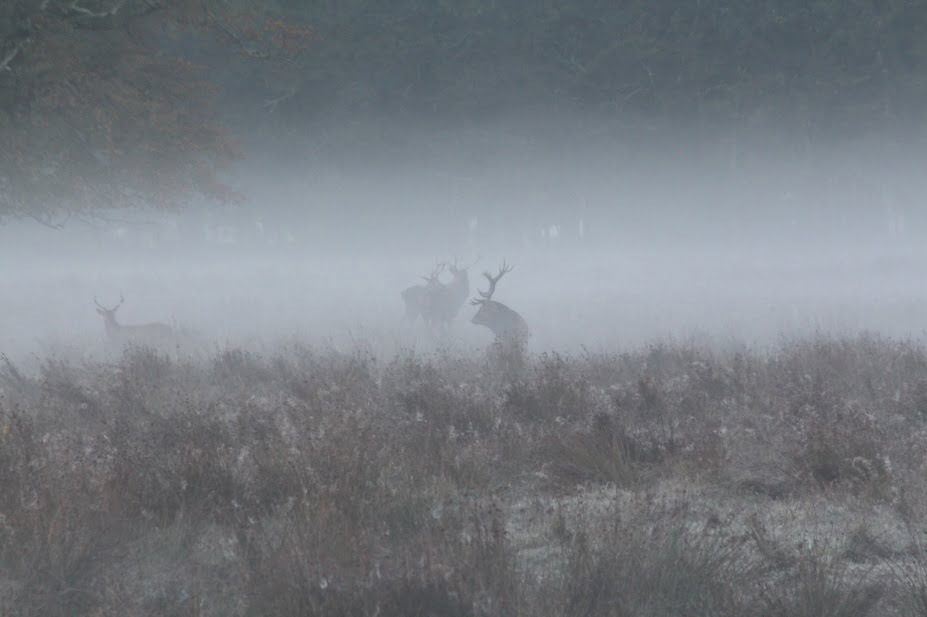
As the morning wears on and the sun begins a slow ascent over the Paps of Anu on the Cork border to the East, the mist begins to lift. The whitened fields dripping with dew begin to reveal dark shapes, some moving others static, all the while calls emanate from the surrounding woodlands and fields of Knockreer, a mere ten-minute walk from the centre of Killarney town. These blackened shapes begin to take form minute by minute, resolving into the recognisable shapes of deer. At this time of year, stags look top heavy, with maned, muscular necks to support their broad antlers. It’s quite a transformation from their sleeker, weaker summer form when their developing antlers are sheathed in “velvet”. The hinds look the same as they always do: smaller, more streamlined, either resting or grazing within their clustered harem groups, watched over by their dominant stag.
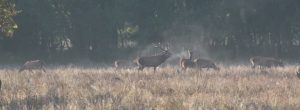
As the sun climbs higher and the mist burns off the playing field is revealed. Near the centre, by an old oak tree, stands a large stag. Surrounding him are a harem of hinds and their calves, which he’s corralled together. He paces around and through the group, ensuring they remain with him, constantly checking if they’re in heat by chasing individuals and lapping his tongue to pick up the chemical cues. While he’s doing this he has to maintain a strong presence, both physically and chemically. He achieves this through posturing with his large antlers while bellowing, making himself seem larger than life. Occasionally he’ll wallow in a muddy pits stirred up with his own urine (red deer cologne) to accentuate his smell and entice hinds into heat.
The life of a dominant red deer stag isn’t an easy one during the short lived breeding season. Renegade hinds often bolt out of the blue, demnding constant vigilance and frequent rounding up. Relentless bellowing to stake his claim over his harem takes its toll on his vocal cords, and chasing off smaller and younger stags attempting to poach outlying hinds demands energy and decisive action.

Stags only clash occasionally, when a fit, equally matched stag appears from the brush, often bellowing his approach with his raspy war cry. The contenders size each other up. More often than not potential fights dissipate before they start. The challenger backs down and the dominant stag returns to tend to his harem. However when the challenger fancies his chances they stags lock horns, and the fighting can be brutal, even deadly.
Smaller or younger stags tend not to threaten larger stags. The size and strength difference is too great, and the weaponry of the dominant stag too formidable. With age the antlers of mature stags become increasingly elongated and curved, enabling them to slash at the side of opponents more effectively, to debilitating and sometimes lethal effect.
Younger animals simply don’t have what it takes to take on a mature stag, but when an equally matched stag appears battle is a real possibility. When a capable challenger decides to take on the local king the stags approach one but veer away at the last moment, and proceed in parallel. They size each other up, each calculating their odds of success, weighing the rewards against the potential damage they could sustain during the contest. Physical appearance is a factor, but also the size and shape of an opponent’s antlers and, crucially, the position of its tines or points. As well as extended tines for slashing, tines low on the antler, just above the top of the head help guard a stags eyes against gouging. If the stag’s antlers don’t lock squarely in a clash eye loss can and does occur.
If the stags decided to fight the lead animal turns sharply, dips his head and clashes with his rival. The bone-jarring sound of clattering antlers emanates across the landscape, only marginally less noisy than the bellowing that preceded it. A reverse form of tug of war ensues. Each stag using every ounce of strength and guile to gain ground as he attempts to oust his opponent in a deadly shoving match. The winner gets the chance to pass on his genes to the next generation; the loser gets nothing. In survival terms, the stakes don’t get any higher. Eventually, one stag will outmanoeuvre the other, either forcing his nemesis to retreat to avoid damage, or inflicting a wound that debilitates his opponent. Fatalities sometimes occur; for stags earning the right to breed is literally a matter of life or death.
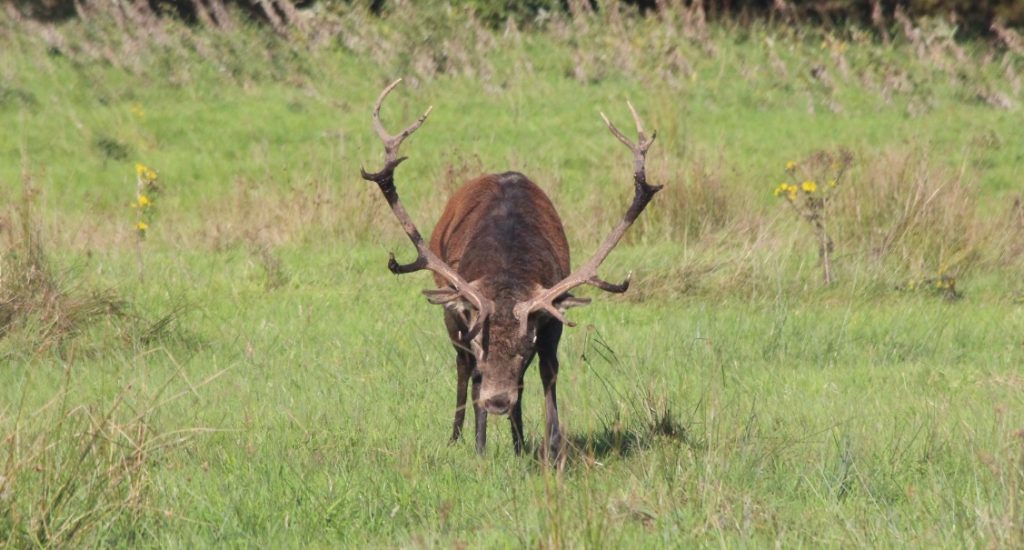
As the rut wanes towards the start of November, once triumphant bellows dwindle to increasingly hoarse croaks and eventually fade completely for another year. The stags that held their ground and mated successfully wind down after over a month of diligence, posturing and vocalising. In November, the park enters the dark winter months in silence. Stags can be seen sitting still or slumped down, recovering from the relentless exertion of the preceding month. The annual rut is perhaps the closest remnant we have to a primal wild Ireland, and is a wildlife event that every Irish person should experience in the flesh.




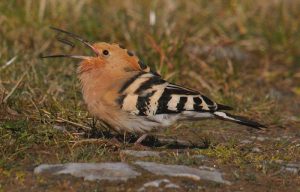



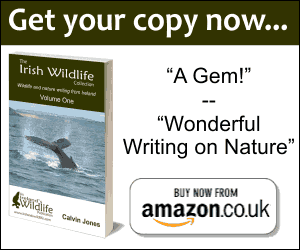

2 comments
Mark O'Callaghan
i was in killarney this evening got close to a stag asleep but there was no rut is it too early i will be taking pictures from next week on
Calvin Jones
It depends, Mark… the deer decide when the rut happens… so there’s no hard and fast date… but it typically happens during the first couple of weeks in October.